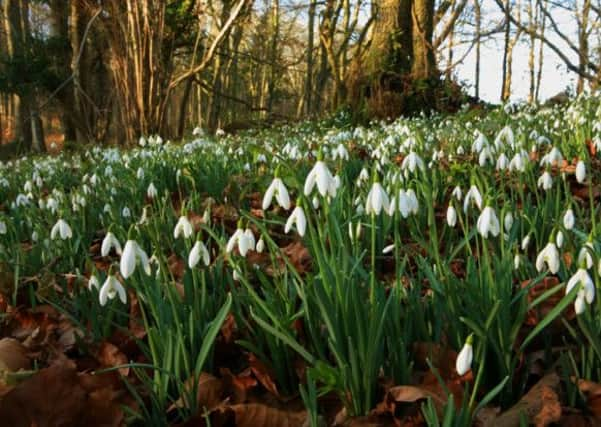Early birds don’t always catch worm as climate changes


Yes, we’ve been buffeted by winds and soaked by torrential rain, but the frost, ice and snow that left us shivering in recent winters is yet to materialise.
The warmest December for quarter of a century has been followed by a mild January. And it seems this warm, wet spell has deceived some of our wildlife into believing spring has already sprung.
Advertisement
Hide AdAdvertisement
Hide AdA quick glance at your nearest park, garden or field edge may trick you into thinking we are already in March rather than the deep mid-winter. The widespread sight of pale green daffodil stems thrusting up bamboo-like through the claggy earth is an unexpected early treat.
But it’s not only the daffodils that have appeared early. The Woodland Trust’s Nature’s Calendar records the first signs of the changing of the seasons; so far this winter they have been inundated with unusually early sightings of spring.
Snowdrops, which typically appear at the end of January, were seen at more than 30 locations in the first fortnight of the month and their slightly premature arrival has helped to boost visitors at RHS Harlow Carr in Harrogate. Hazel has also been reported flowering in Lincolnshire and elder has been seen bursting into bud across the UK.
Ladybirds, which normally appear in mid-March, have also made an early appearance; likewise Brimstone, Red Admiral, Small Tortoiseshell, Peacock, Comma and Speckled Wood sightings have all been reported to Butterfly Conservation.
Advertisement
Hide AdAdvertisement
Hide AdAccording to the British Trust for Ornithology (BTO) around 10 Swallows have been reported in southern England since December 1, with several still being seen well into January suggesting that these birds, which normally spend the colder months in Africa, have attempted to over-winter in the UK.
Other summer migrants also appear to have had the same idea: a Willow Warbler remaining in West Sussex, a Whitethroat on Teesside and a Lesser Whitethroat in Notts.
A Wheatear, typically one of the earliest migrants to return to the UK has been spotted in Cheshire, but the BTO believes this bird may also have decided to stay and see out the winter rather than migrate south.
All these unusual sightings might be causing a stir now, but experts believe we should no longer be surprised by them. Chris Hickman from the Woodland Trust explains: “Generally as the climate warms it seems that temperatures in December and January are more amenable for the earlier development of plants and animals. December 2013 was the mildest in 25 years according to the Met office.
Advertisement
Hide AdAdvertisement
Hide Ad“What is unusual is that early signs of spring in January are actually no longer unusual. So although we have records of everything from Red Admiral butterflies to ladybirds and wasps, our data has actually highlighted it is becoming more and more common over the last decade.
“This reflects a trend for spring as a season to arrive earlier and earlier. Over the last 25 years, flowers have bloomed up to 12 days earlier than previously.”
However common it is becoming though, these early risers may still be in for a short, sharp, shock.
“The dangers of emerging early are two-fold,” explains Hickman. “One would be a lack of food sources along the food chain for those creatures which come out of hibernation or have young earlier. The second being the risk of a prolonged spell of freezing weather later into spring, as happened in 2013 – which could be a threat to life.”
Advertisement
Hide AdAdvertisement
Hide AdWhile the mild weather might be kind to plants and garden favourites like ladybirds, less welcome visitors also benefit from the unseasonally warm temperatures.
Pests and diseases have also been enjoying an early spring, and experts say there is the potential for increased incidence of disease among farmer’s crops later in the year.
For those who suffer from allergies an early spring is not good news either as higher pollen counts bring on symptoms a few months earlier than they might normally be expected.
Nature’s Calendar project manager, Dr Kate Lewthwaite, adds: “What this highlights is the importance of having diverse, inter-connected habitats which allow species to react to any changes in climate and adjust accordingly. With habitats coming under ever greater threat and fragmentation the pressure on our native flora and fauna will only increase.”
To submit your early spring sightings to Nature’s Calendar, visit www.woodlandtrust.org.uk